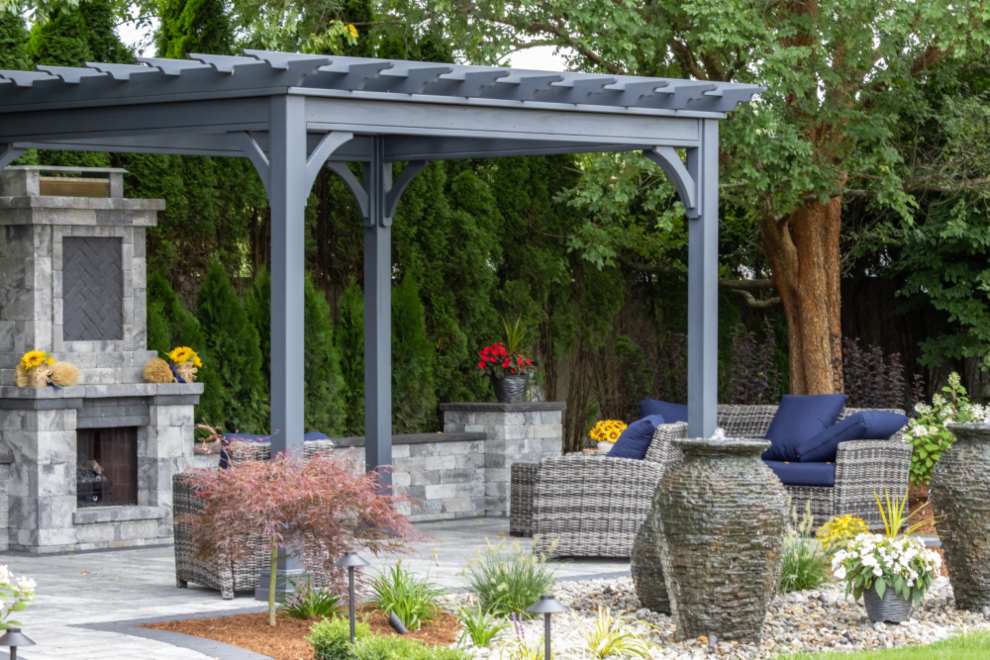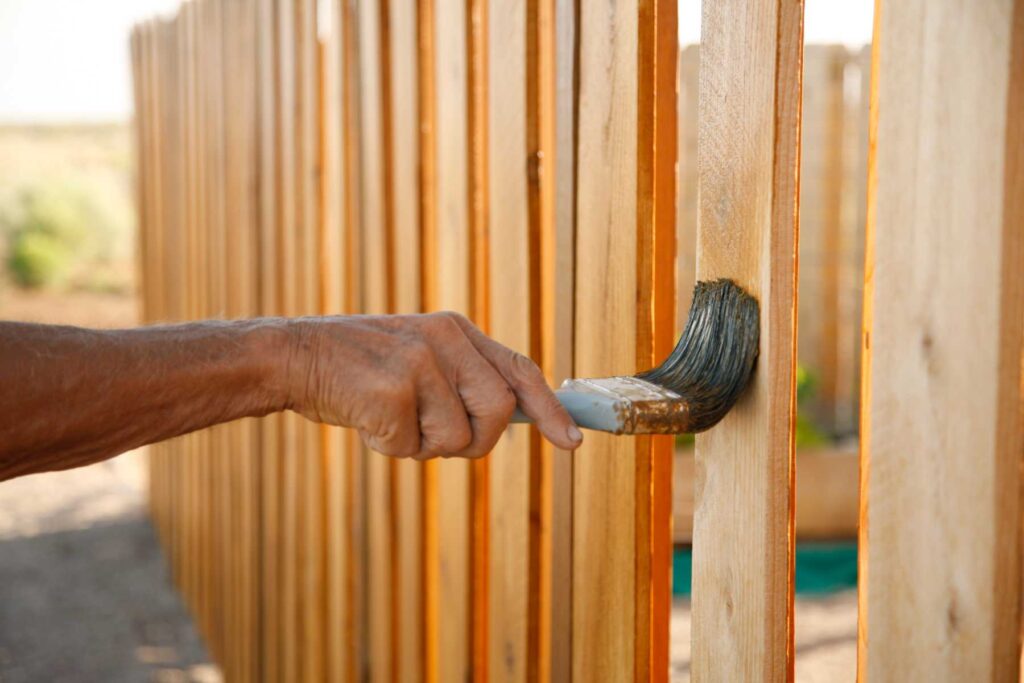-
Do You Need a Permit to Build a Pergola?
Does a Pergola Need a Permit?
Does a pergola need a permit? In most states, a permit is required to build a pergola on your property. A pergola is considered a permanent structure, and you may have to undergo an inspection or submit your building plans to the proper city or county agency. If you are building a smaller pergola, you may be eligible for a permit exemption; however, it is best to check with the permitting office in your jurisdiction or work with an experienced contractor. Keep reading for more important information about pergola building codes.

Understanding Pergola Building Codes
In Oregon, you don’t need a permit to install a patio cover or porch cover that is less than 200 square feet in size and is supported by an exterior wall of your home. However, pergolas are often more complex than a simple patio or porch cover, as they typically consist of a deck or floor, vertical posts or columns, and a roof. If you are building a freestanding pergola, you will likely need to get a permit before the installation begins. If your pergola will be attached to one wall of your property and will be less than 200 square feet, you may not need one. Working with a professional builder or contractor will protect you from financial and legal liability and ensure you aren’t at risk of fines or fees. You may also need to obtain special approval to use certain building materials or build a pergola over a specific size or height.
Consult With a Professional About Pergola Code Requirements
A builder or contractor can help you determine the specific pergola code requirements for your city or county. Most pergolas must be less than 10-12 feet tall and cannot block views for your neighbors or pose a safety hazard. Your pergola may need to be installed 5-10 feet back from neighboring property lines or from city sidewalks or streets. You also need to make sure the installation site is properly prepared, which may include grading or leveling and drainage. In some cities and counties, you may need to install gutters or other drainage systems to reduce the risk of flooding and soil erosion.
Applying for the Proper Permit for Building a Pergola
Your contractor can also help you make sure you apply for the proper permit. When you apply, you will need to submit specific documentation, including plans or blueprints for your project, the name and contact information of your builder or contractor, and details about the scope of your project and its potential impact on your neighbors and the surrounding environment. You may also have to pay fees. If your permit is issued, you will need to schedule inspections with the city or county. Your inspector will make sure your property is properly zoned and graded for pergola installation and will sign off on the final plans for your project.
What Size Pergola Can I Build Without a Permit?
Some cities and counties in Oregon allow you to build a one-story pergola that is less than 200 square feet, under 15 feet from the ground to the highest part of the roof and supported by an exterior building wall without securing a permit. Your pergola cannot be used as a living space, and you may face additional regulations regarding its installation on your property. However, the rules may vary from one jurisdiction to another, so it’s best to talk to someone in your permitting office or hire a contractor.
What Happens if You Build a Pergola Without a Permit?
If you don’t comply with your city or county’s building codes and regulations, you could face fines and fees. You may be subject to a surprise inspection and may be forced to tear down your structure or have it inspected and redone. You may also open yourself up to financial and legal liability, especially if a neighbor complains or if someone is injured due to your structure or the installation process.
Call to Schedule a Consultation for Pergola Installation
It’s always best to work with a professional for pergola installation. Dick’s Evergreen Fence and Deck specializes in professional pergola design and construction in the Portland, OR, area. We will work closely with you to design and install a pergola that complements the aesthetics of your home and outdoor living space, adding value and beauty to your property while providing a safe and comfortable area for you and your family to enjoy the outdoors. We have the expertise needed to ensure your structure is properly permitted and inspected so that you won’t need to worry about fees or fines. Call us now or contact us online to schedule a consultation.
-
Ultimate Guide to Staining Your Fence
Your Ultimate Guide on How to Stain a Fence
Fence stain is a protective coating that protects your wood fence from sun, moisture, insects, and damage. It can also be used to enhance or change the color of your fence, making it more beautiful. Most wooden fences only need to be stained every two or three years, but if you live in an area with extreme weather or temperature, your fence should be stained as soon as you notice signs of moisture intrusion. If you’re researching the best way to stain a fence or wondering can you roll stain on a fence, keep reading for your ultimate guide to how to stain a fence.

Choose the Right Fence Staining Product
You may want to ask an expert for advice on the right type of stain for your fence. A water-based stain may penetrate certain species of wood better, but an oil-based stain may offer better protection if you live in an area that gets extreme weather. If you want the natural color and grain of the wood to show through, you should choose a transparent or semi-transparent stain. If you want to change the color or appearance of the wood significantly, you should choose a solid stain. If your fence is in the sun or is at risk of moisture or pests, you should choose a protective stain.
Prepare Your Fence
Before you begin, you want to prepare your fence. Proper preparation will ensure an even application and a better result. Use a brush to remove debris and dirt from the fence. If the fence has chipped or loose paint, remove it thoroughly before staining. If the fence has rough marks or splinters, sand it before beginning. Make any necessary repairs, including replacing damaged or rotting boards, before you begin.
Check the Weather Forecast
Be sure to check the weather forecast before you begin working. The ideal temperature to stain a fence is 70 degrees Fahrenheit, but any temperature between 50-90 degrees Fahrenheit will work. If it is below 50 degrees Fahrenheit, the stain may take too long to dry, causing streaks, peeling, or cracking. If the temperature is above 90 degrees Fahrenheit, the stain may dry too quickly, leading to uneven application and streak marks. You also shouldn’t stain your fence if it is going to rain within the next 24 hours or if the outside air is extremely humid. Avoid staining wood in direct sunlight.
Use a Roller or a Paint Brush
Stir the container of wood stain before applying it, and every 15-20 minutes to make sure the texture and color stay consistent. The best way to stain a fence is to use a paintbrush or a roller. Make sure to use thin, even coats and apply the stain in the direction of the wood’s grain. This will make it look more consistent and natural. You should also work in small sections and avoid going over the same section more than once.
If You are Going to Spray, Use the Right Technique
If you have a large fence, you may want to spray the stain on so that you can work faster. Be sure to wear a mask to protect yourself from breathing in the stain as it becomes aerosolized. An airless sprayer can be used for large projects, but it requires some practice to make sure you have the right technique. An electric sprayer is easier for beginners to use as it offers more control, but it is only right for small to medium-sized fences.
Regularly Inspect, Clean, & Maintain Your Fence
After you have stained your fence, you should inspect it regularly for signs of damage, pest problems, and moisture intrusion. Clean your fence seasonally or after heavy storms, using a brush, warm water, and mild dish soap to remove dirt and debris. Do not power wash a cedar fence. Instead, use a garden hose to gently clean it, but only on a hot, sunny day when you know the fence will dry quickly. If you see signs of wear and tear, you can touch up those areas with more stain.
Call to Schedule Wood Fence Installation
Dick’s Evergreen Fence and Deck offers professional wood fence installation in the Portland, OR, area. We have more than 40 years of experience in the fencing and decking industry. We only use high-quality wood for our fences and can build them to any size or custom specifications. In addition to wood fencing, we also offer wood decks, pergolas, patio covers, and garden accents. Our premium cedar fencing is beautiful and naturally resistant to insects, decay, and rot. Call now or contact us online to schedule wood fence installation.
